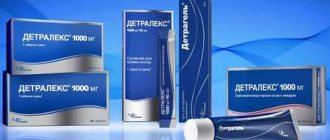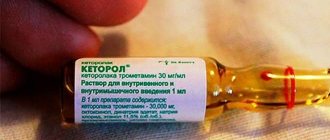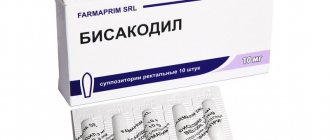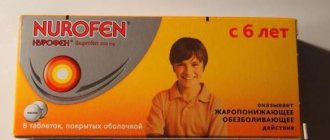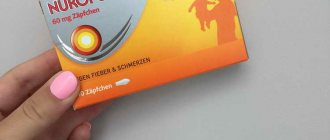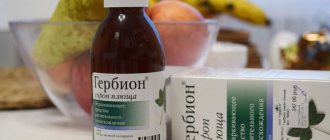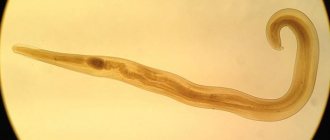Compound
Nemozol tablets in p/o contain 0.4 g of albendazole , corn starch, povidone-30, purified talc, sodium lauryl sulfate, gelatin, silicon dioxide (in colloidal form), sodium starch glycolate, methyl and propyl paraben, magnesium stearate.
Composition p/o: titanium dioxide, hydroxypropyl methylcellulose, propylene glycol; methylene chloride and isopropanol (evaporate when dried). Nemozol chewable tablets contain 0.4 g of albendazole , corn starch, povidone-30, purified talc, sodium lauryl sulfate, silicon dioxide (in colloidal form), gelatin, citric acid, methyl and propyl paraben, sodium starch glycolate, aspartame, magnesium stearate, flavorings (pineapple/mint).
The Nemozol suspension albendazole at a concentration of 20 mg/ml. Auxiliary components: MCC, sodium carboxymethylcellulose, sorbitol , benzoic and sorbic acids, glycerin (glycerol), potassium hydrochloride, polysorbate-80, flavorings (ice cream essences/mixed fruit flavor), purified water.
Nemozol for worms
According to the classification adopted in pharmacology, the medication is included in the subgroup of drugs with anthelmintic activity, the group of antimicrobial and antiparasitic agents. Nemozol - instructions for use state that the medicine is available in three different formats, is suitable for use by adults and children, and destroys all types of worms. The active ingredient is albendazole.
Composition and release form
The medication is available in three formats: suspension, tablets and chewable tablets. The active ingredient is albendazole, which kills all types of helminths. Full composition:
| Release format | Anti-worm tablets Nemozol | Suspension | Chewable tablets |
| Active ingredient content | 400 mg per 1 piece | 100 mg per 5 ml | 400 mg per 1 tablet |
| Additional components | Corn starch, sodium lauryl sulfate, povidone-30, gelatin, talc, colloidal silicon dioxide, sodium starch glycolate, methyl and propyl paraben, magnesium stearate. Shell: hydroxypropyl methylcellulose, titanium dioxide, propylene glycol, isopropanol, methylene chloride | Microcrystalline cellulose, sodium carboxymethylcellulose, potassium hydrochloride, fruit flavor and ice cream essence, sorbic acid, glycerin, benzoic acid, polysorbate-80, sorbitol solution, purified water | Corn starch, sodium lauryl sulfate, sodium starch glycolate, povidone-30, methylparaben, citric acid, propylparaben, gelatin, talc, colloidal silica, aspartame, magnesium stearate, pineapple and mint flavors |
| Description | White, biconvex, with a notch | White | White, biconvex, with pineapple and mint aroma |
| Package | 1 or 2 pcs. packaged | Bottle 20 ml | There is one piece in the blister |
Pharmacodynamics and pharmacokinetics
The mechanism of action of the anthelminthic drug in the intestinal tract is associated with the effect of inhibiting the polymerization of beta-tubulin, which leads to the destruction of cell channels, suppresses the release of glucose, changes the course of processes in the body of the worm, blocks the transport function of cells, causing the death of helminths. The drug is effective against larval forms of echinococcus cestodes and nematodes.
After oral administration, the drug is poorly absorbed in the stomach and intestines and is not detected in the blood plasma unchanged. Bioavailability is approximately 30%. Fatty foods increase absorption and maximum plasma concentration by five times. Albendazole is transformed in the liver to sulfoxide, which also has a negative effect on worms. This metabolite binds to plasma proteins up to 70%, reaches its maximum concentration after 2-5 hours, and is distributed throughout the body.
The action of albendazole and its secondary metabolite sulfone begins after 8-12 hours and is excreted in the urine. The excretion of albendazole and its metabolites does not change in patients with renal impairment. With liver dysfunction, bioavailability increases, maximum concentration is reached twice as quickly, and the half-life is prolonged. The active substance serves as an inducer of enzymes of the cytochrome system and accelerates the metabolism of other drugs.
Indications for use
According to the instructions for use, Nemozol has the following indications for which it can be prescribed:
- treatment of nematodes, ascariasis, hookworm disease, necatorosis, trichocephalosis;
- strongyloidiasis;
- mixed helminthic infestations;
- treatment of helminthiases;
- neurocysticercosis;
- treatment of enterobiasis;
- toxocariasis;
- echinococcosis of the liver, lungs, peritoneum;
- giardiasis;
- an adjuvant in the surgical removal of cysts caused by the growth of echinococcus to kill intestinal parasites.
Nemozol for prevention
If one of the family members is found to be infected with helminths, then others need to take Nemozol for prevention, so as not to catch worms. Prophylactic dosage depends on the type of helminthic infestation. The suspension is taken in 10-20 ml doses over two days, tablets are taken in a single dose of 200-400 mg. Due to the high toxicity of the drug, prevention of helminthic infestation is carried out no more often than once every two months. The medicine in the form of a suspension can be taken by children under two years of age; tablets are prescribed only from the age of three.
Pharmacodynamics and pharmacokinetics
Albendazole contained in Nemozole is an antiparasitic agent .
The main mechanism of action of the substance is associated with its ability to inhibit the polymerization of the beta-tubulin protein.
This leads to the fact that the activity of the cytoplasmic microtubular system in the cells of the intestinal tract of helminths is disrupted; the course of biochemical processes in the organisms of parasites changes; in the muscle cells of nematodes, the movement of secretory granules and other organelles is blocked.
The result of such exposure is the death of parasites.
It is most effective against the larvae of tapeworms (pork tapeworm and echinococcus), as well as against the roundworms Strongyloides stercolatis (intestinal eel).
Pharmacokinetics
The substance is poorly absorbed from the digestive tract and is not found in the plasma unchanged. Characterized by low bioavailability (approximately 30%).
An increase in absorption and Cmax (5 times) is facilitated by taking the drug simultaneously with fatty foods.
The substance quickly undergoes biotransformation in the liver. The primary metabolite (M1) is albendazole sulfoxide, which also has anthelmintic activity .
TCmax M1 varies from 2 to 5 hours. About 70% of albendazole sulfoxide is bound to plasma proteins. The substance is almost completely distributed throughout the body; determined in the liver, bile, urine, cystic fluid and cyst wall, cerebrospinal fluid.
In the liver, M1 is converted to albendazole sulfone (M2) and other oxidized products. T1/2 M1 - from 8 to 12 hours. Excreted by the kidneys in the form of various metabolic products.
If renal function is impaired, the excretion of albendazole and M1 does not change.
With impaired liver function, the bioavailability of the substance and Cmax M1 increase (2 times), and T1/2 also lengthens.
Albendazole increases the activity of microsomal enzymes of the CYP system; accelerates the metabolism of many drugs.
Pharmacological properties of the drug Nemozol™
Pharmacodynamics. Albendazole is a broad-spectrum anthelmintic agent that is also active against pathogenic protozoa. Acts on intestinal and tissue forms of parasites; active against eggs, larvae and adult helminths. The antihelminthic effect of the drug is due to inhibition of tubulin polymerization, which leads to metabolic disturbances and death of the helminth. Albendazole is active against intestinal parasites, including nematodes (Ascaris lumbricoides, Triсhiurus triсhiura, Enterobius vermicularis, Ancylostoma duodenale, Necator americanus, Strongiloides stercoralis, Cutaneous Larva Migrans) , cestodes (Hymenolepsis nana, Taenia solium, Taenia saginata) , trematodes ( Opisthorhis viverrini, Clonorchis sinensis) , protozoa ( Giardia lamblia (intestinalis and duodenalis) . Albendazole is effective against tissue parasites, including cystic echinococcosis and alveolar echinococcosis, caused by invasion of Echinococcus granulosus and Echinococcus multilocularis , respectively. The drug is also effective in the treatment of neurocysticercosis, caused by nogo invasion larvae of the pork tapeworm T. solium, capillariasis caused by invasion of Gnatostoma spinigerum . Albendazole destroys cysts or significantly reduces their size in patients with cysts of granular echinococcus. Pharmacokinetics. After oral administration, the drug is poorly absorbed (up to 5%) in the gastrointestinal tract. Simultaneous use of fatty foods approx. increases drug absorption 5 times. Albendazole is 70% bound to blood plasma proteins and is freely distributed in the body; determined in urine, bile, liver, cyst wall and cyst fluid, CSF. Albendazole sulfoxide is rapidly converted in the liver to albendazole sulfone (a secondary metabolite) and other oxidized products. The half-life of albendazole sulfoxide from blood plasma lasts 8–12 hours. Albendazole sulfoxide and other metabolites are excreted primarily in the bile, and only a small amount is excreted in the urine. Since the renal excretion of albendazole and its primary metabolite, albendazole sulfoxide, is insignificant, clearance in patients with impaired renal function does not change. In patients with biliary obstruction, systemic bioavailability may be increased and the half-life of albendazole sulfoxide may be prolonged.
Indications for use
The drug is used to treat:
- nematodes ( hookworm , ascariasis , trichuriasis , necatoriasis , enterobiasis );
- strongyloidiasis;
- toxocariasis;
- giardiasis;
- neurocysticercosis , the causative agent of which is the larvae of the armed (pork) tapeworm;
- echinococcosis of the peritoneum , lungs and liver, the causative agent of which is the larvae of the tapeworm echinococcus;
- mixed helminthic infestations.
It is also advisable to use the drug as an addition to the main treatment during surgical interventions to remove echinococcal cysts.
Side effects
Side effects of the drug may manifest themselves as:
- liver dysfunction , in which there is an increase (weak/moderate)
- transaminase activity;
- nausea/vomiting;
- pain in the abdomen;
- inhibition of bone marrow hematopoiesis ( agranulocytosis , leukopenia , pancytopenia , granulocytopenia , thrombocytopenia );
- dizziness;
- headache;
- clinical signs of irritation of the meninges ( meningeal symptoms ).
- alopecia (reversible);
- skin rash;
- itching;
- hyperthermia;
- increased blood pressure;
- hypersensitivity reactions;
- acute renal failure.
Side effects of the drug Nemozol™
from the gastrointestinal tract: stomatitis, dry mouth, heartburn, nausea, vomiting, abdominal pain, flatulence, diarrhea, constipation; from the cardiovascular system: arterial hypertension; from the central and peripheral nervous system: insomnia or drowsiness, headache, dizziness, confusion, disorientation, hallucinations, convulsions, decreased visual acuity; from the hematopoietic system: leukopenia, thrombocytopenia, pancytopenia; from the skin and its appendages: alopecia; from the urinary system: impaired renal function, acute renal failure; allergic reactions: itching, urticaria, pemphigus, dermatitis, chills; laboratory indicators: increased activity of liver enzymes.
Instructions for use of Nemozol (Method and dosage)
Nemozol suspension, instructions for use
The medicine is taken orally with meals. To increase the bioavailability of albendazole, it should be taken with a fatty meal.
Nemozol for children 12-24 months with ascariasis, hookworm, trichinosis , enterobiasis, necatoriasis, a one-time dose of 1 dessert spoon of suspension (10 ml) is indicated.
Recommendations on how to take medicine for children over two years of age are as follows:
- for ascariasis , hookworm , trichinosis , enterobiasis , necatoriasis - the child is given 20 ml of the drug once (it is recommended to take Nemozol for worms at the same time for all persons living together).
- For taeniasis and strongyloidiasis , the suspension for children is given 1 r./day, 20 ml for 3 days.
- For toxocariasis , it is recommended to take 20 ml of suspension once a day for 10 days.
- For polyhelminthiases caused by infection of the body with Clonorchis sinensis (Chinese fluke) and Opisthorchis viverrini (Civet fluke), patients are recommended to be given 20 ml of suspension twice a day for 3 days.
Treatment of giardiasis in children aged 2 to 12 years is carried out using a dose of 20 ml/day. (the medicine is taken in one dose). The course lasts 5 days.
For adult patients, Nemozol for giardiasis, ascariasis, hookworm disease, strongyloidiasis, trichinosis, enterobiasis, necatoriasis, toxocariasis, taeniasis and polyhelminthiasis is prescribed to be taken according to a similar scheme.
For cystic/alveolar echinococcosis , as well as for neurocysticercosis , patients weighing more than 60 kg are given the drug twice a day, 20 ml. For patients weighing less than 60 kg, the recommended daily dose of albendazole is 15 mg/kg, divided into 2 doses. The highest dose is 800 mg/day.
The course of treatment for cystic echinococcosis is designed for 28 days. After 14 days, treatment can be repeated. If necessary, 3 courses are allowed.
For alveolar echinococcosis, the patient is prescribed Nemozol for 3 courses of 28 days with 14-day intervals between courses.
For neurocysticercosis, treatment lasts from 1 week to 30 days. A repeat course is possible after 14 days.
For a creeping rash, take the suspension 20 ml once a day for 1-3 days.
Nemozol tablets, instructions for use
The tablets are taken orally with food (preferably fatty foods, as this increases the bioavailability of albendazole ).
For children over three years of age, adolescents and adults, the instructions provide the following recommendations on how to take the drug:
- for ascariasis, hookworm, trichinosis, enterobiasis, necatoriasis - 1 tablet/day. one-time use.
- For taeniasis and strongyloidiasis, tablets are given one tablet per day for 3 days.
- For toxocariasis, take one tablet once a day for 10 days.
- For mixed helminthiases caused by infection of the body with Clonorchis sinensis (Chinese fluke) and Opisthorchis viverrini (Civet fluke), patients are recommended to take one tablet twice a day for 3 days.
For the treatment of giardiasis in adults and children over 3 years of age, the patient is given 1 Nemozol tablet per day for 5 days.
For cystic/alveolar echinococcosis , as well as for neurocysticercosis , patients weighing more than 60 kg are given the drug twice a day, 1 tablet. For patients weighing less than 60 kg, the recommended daily dose of albendazole is 15 mg/kg, divided into 2 doses. The highest dose is 800 mg/day.
The course of treatment for cystic echinococcosis is designed for 28 days. After 14 days, treatment can be repeated. If necessary, 3 courses are allowed.
For alveolar echinococcosis, the patient is prescribed Nemozol for 3 courses of 28 days with 14-day intervals between courses.
For neurocysticercosis, treatment lasts from 1 week to 30 days. A repeat course is possible after 14 days.
For a creeping rash, take one tablet per day for 1-3 days.
It should be remembered that it is recommended that all people living together take anti-worm tablets at the same time.
How quickly does Nemozol work?
Reviews of Nemozole for children and adults indicate that parasites usually go away within a week after taking the drug. 3 weeks after treatment, it is recommended to do a repeat stool test.
How long will it take for the worms to come out?
After taking Nemozol, its effect begins literally within a quarter of an hour, regardless of whether it is in tablet form or in the form of a suspension, which is used to treat children. The mass release of dead helminths usually begins within a day and, depending on the type of helminthiasis and the intensity of intestinal motility, can take from 1 to 5 days.
Find medications for parasites
This service is a small help in finding cures for parasites. To start using it, select the type of parasite. If you don’t know what kind of parasite you are infected with, this parasite identification tool will help you by symptoms.
special instructions
During treatment with the drug, it is necessary to monitor changes in the cellular composition of the blood (the level of leukocytes is checked before starting treatment and then every 2 weeks of the cycle) and the activity of liver enzymes.
If the patient experiences leukopenia , treatment should be suspended. You can continue the course only if the degree of decrease in the concentration of neutrophils and leukocytes is insignificant, and leukopenia does not progress.
If the activity of liver enzymes exceeds the upper limit of normal by more than twice, the use of Nemozol is discontinued until they are completely normalized.
For neurocysticercosis, the drug is prescribed in combination with anticonvulsants and corticosteroids. Oral and parenteral forms of GCS in the first week of using Nemozol are used to prevent an attack of hypertension .
Bibliography
- Centers for Disease Control and Prevention. Brucellosis. Parasites. Link
- Corbel MJ Parasitic diseases // World Health Organization. Link
- Young EJ Best matches for intestinal parasites // Clinical Infectious Diseases. — 1995. Vol. 21. - P. 283-290. Link
- Yushchuk N.D., Vengerov Yu.A. Infectious diseases: textbook. — 2nd edition. - M.: Medicine, 2003. - 544 p.
- Prevalence of parasitic diseases among the population, 2009 / Kokolova L. M., Reshetnikov A. D., Platonov T. A., Verkhovtseva L. A.
- Helminths of domestic carnivores of the Voronezh region, 2011 / Nikulin P. I., Romashov B. V.
An article for patients with a doctor-diagnosed disease. Does not replace a doctor's appointment and cannot be used for self-diagnosis.
The best stories from our readers
Topic: Parasites are to blame for all troubles!
From: Lyudmila S. ( [email protected] )
To: Administration Noparasites.ru
Not long ago my health condition worsened. I began to feel constant fatigue, headaches, laziness and some kind of endless apathy appeared. Problems also appeared with the gastrointestinal tract: bloating, diarrhea, pain and bad breath.
I thought it was because of the hard work and hoped that it would go away on its own. But every day I felt worse. The doctors couldn’t really say anything either. Everything seems to be normal, but I feel like my body is not healthy.
I decided to go to a private clinic. Here I was advised, in addition to general tests, to get tested for parasites. So in one of the tests they found parasites in me. According to doctors, these were worms, which 90% of people have and almost everyone is infected, to a greater or lesser extent.
I was prescribed a course of antiparasitic medications. But it didn’t give me any results. A week later, a friend sent me a link to an article where some parasitologist shared real tips on fighting parasites. This article literally saved my life. I followed all the advice that was there and after a couple of days I felt much better!
Digestion improved, headaches went away and the vital energy that I so lacked appeared. To be sure, I took the tests again and no parasites were found!
Anyone who wants to cleanse their body of parasites, no matter what types of these creatures live in you, read this article, I’m 100% sure it will help you! Go to article>>>
Still have questions? Ask them in our Anonymous group on VK
How to get rid of parasites in a week. The answer is here!
A reliable and effective remedy for combating worms. Removes all parasites in 21 days.
Go to website
Reviews
Read online
Symptoms that 100% indicate parasites! Take the Test.
How to rid your body of life-threatening parasites before it’s too late!
Read more
Website
To get a consultation
The doctor tells how to quickly get rid of parasites for adults and children!
A parasitologist explains what effective methods exist to combat helminths.
More details
Read completely
Comments
Search for cures for parasites
This service is a small help in finding cures for parasites. To start using it, select the type of parasite. If you don’t know what kind of parasite you are infected with, this parasite identification tool will help you by symptoms.
We recommend reading
Prevention of malaria before travel: specific measures, medications, vaccinations
4 days ago 01/29/202102/1/2021ecoliv94
Malaria vaccination: how, where and how much it costs, how long it lasts
5 days ago 01/28/202102/1/2021ecoliv94
Culture for pathogenic and conditionally pathogenic flora: analysis of stool and urine
5 days ago 01/28/202102/1/2021ecoliv94
IHC for Giardia: analysis of stool for Giardia cysts using IHC
6 days ago 01/27/202127.01.2021ecoliv94
Nemozol's analogs
Level 4 ATC code matches:
Medamin
Vermakar
Vermox
Aldazole
Zentel
Wormil
Vormin
Sanoxal
Mebendazole
Structural analogues of Nemozol: Gelmodol-VM , Sanoxal , Albendazole .
Nemozol or Vermox - which is better?
Vermox is a broad-spectrum antiparasitic agent. The basis of the drug is the substance mebendazole , its concentration in one tablet is 100 mg.
Vermox is most effective against trichuriasis and enterobiasis . Nemozol exhibits the greatest activity against the larvae of pork tapeworm and echinococcus , as well as against intestinal acne .
Vermox can be used from the age of two, while the Nemozol suspension is prescribed to children from the age of one.
Which is better: Dekaris or Nemozol?
Decaris tablets levamisole (50 or 150 mg/tablet) as an active substance Levamisole is effective against infections with the following parasites:
- Ancylostoma duodenale;
- Ascaris lumbrocoides;
- Necator Americanus.
The drug is approved for use in patients over three years of age.
Nemozol or Dekaris - which is better for prevention?
It is difficult to say unequivocally which is better for prevention - Nemozol or Dekaris. Decaris is used in children from 3 years of age, but its area of use is limited to three types of parasites. Active against toxoplasmosis, ascariasis. Recommended for cat lovers to prevent common parasites with humans. The active ingredient in Decaris, levamisole, stimulates the immune system.
Reviews of Nemozole
Reviews from doctors about the drug Nemozol allow us to conclude that this medicine for worms is one of the best today. The drug disrupts the flow of biochemical processes in the body of parasites, causes destruction of their cell membranes and, as a result, leads to the death of helminths.
The effect of the drug applies to tapeworm larvae (armed, canine), Giardia, whipworm, pinworms, opisthorchia, roundworm, necator americanus, intestinal eels, microsporidia, toxocara. Nemozol is also effective for polyhelminthiasis.
The manufacturer produces it in the form of tablets and suspensions: tablets are the optimal dosage form for adults, a suspension is prescribed for children over 12 months of age.
Most people leave good reviews about Nemozole on forums. Since helminthic infestations most often occur in childhood, these are mainly reviews of Nemozol for children. Almost all mothers note the speed of the drug and its effectiveness, however, they emphasize that some patients may experience side effects.
Nemozol: how worms come out after using the drug
As already mentioned, the effectiveness of Nemozol is based on its destructive effect on the neuromuscular system of parasites, which causes disruption of their vital functions and, ultimately, paralysis. How do worms come out after nemozol? This question interests many, especially parents who have to treat helminthiases in their children.
After nemosol, helminths are no longer able to attach themselves to the intestinal walls, and due to intestinal peristalsis, they are excreted naturally along with feces in a digested, semi-digested, and sometimes whole form.
Roundworms in feces after a course of treatment with Nemazol
Nemozol price
The price for Nemozol tablets in Russian pharmacies varies from 176 to 206 rubles. The cost of chewable tablets 400 mg is 200-210 rubles. The price of Nemozol suspension is 160-205 rubles.
The average price in Ukraine for Nemozol (albendazole) in the form of tablets in p/o is 200 UAH, chewable tablets are 250 UAH. You can buy a suspension for oral administration for 220 UAH.
- Online pharmacies in RussiaRussia
- Online pharmacies in KazakhstanKazakhstan
ZdravCity
- Nemozol tablets p.p.o.
400 mg 1 piece Ipca Laboratories Ltd RUB 181 order - Nemozol chewable tablets. 400 mg 1 piece Ipca Laboratories Ltd
185 rub. order
- Nemozol susp. for internal approx. 100mg/5ml 20mlIpca Laboratories Ltd
RUB 194 order
- Nemozol tablets p.p.o. 400 mg 5 pcs. Ipka Laboratories Limited
RUR 756 order
- Cream Nemozol 15 mlLaboratoriya Emansi/Proba LLC
111 rub. order
Pharmacy Dialogue
- Nemozol tablets 400 mg No. 1Ipka Laboratoris
200 rub. order
- Nemozol suspension bottle 100mg/5ml 20ml for oral administrationIpka Laboratoris
RUB 211 order
- Nemozol chewable tablets 400 mg No. 1Ipka Laboratoris
RUB 199 order
- Nemozol cosmetic cream for calluses/corns 75mlNaturotherapy JSC
RUB 225 order
- Nemozol tablets 400 mg No. 5Ipka Laboratoris
RUR 851 order
show more
Nemozol for children
According to the instructions for use, Nemozol for children is prescribed in a dosage depending on the age of the patient and the type of disease:
- nematodes - in children after two years of age, the dose is 400 mg tablets or 20 ml of suspension;
- Giardiasis – 10-15 mg/kg r/day for a week;
- toxocariasis - over 14 years old, 400 mg (with a weight over 60 kg) or 200 mg (up to 60 kg) twice a day, under 14 years old - 10 mg/kg, course 1-2 weeks;
- the daily dose of tablets for children is 6 mg/kg;
- cysticercosis of the brain - children under two years old take 15 mg/kg for eight days, over two years old - 200 mg 2 times a day for 8-30 days.
